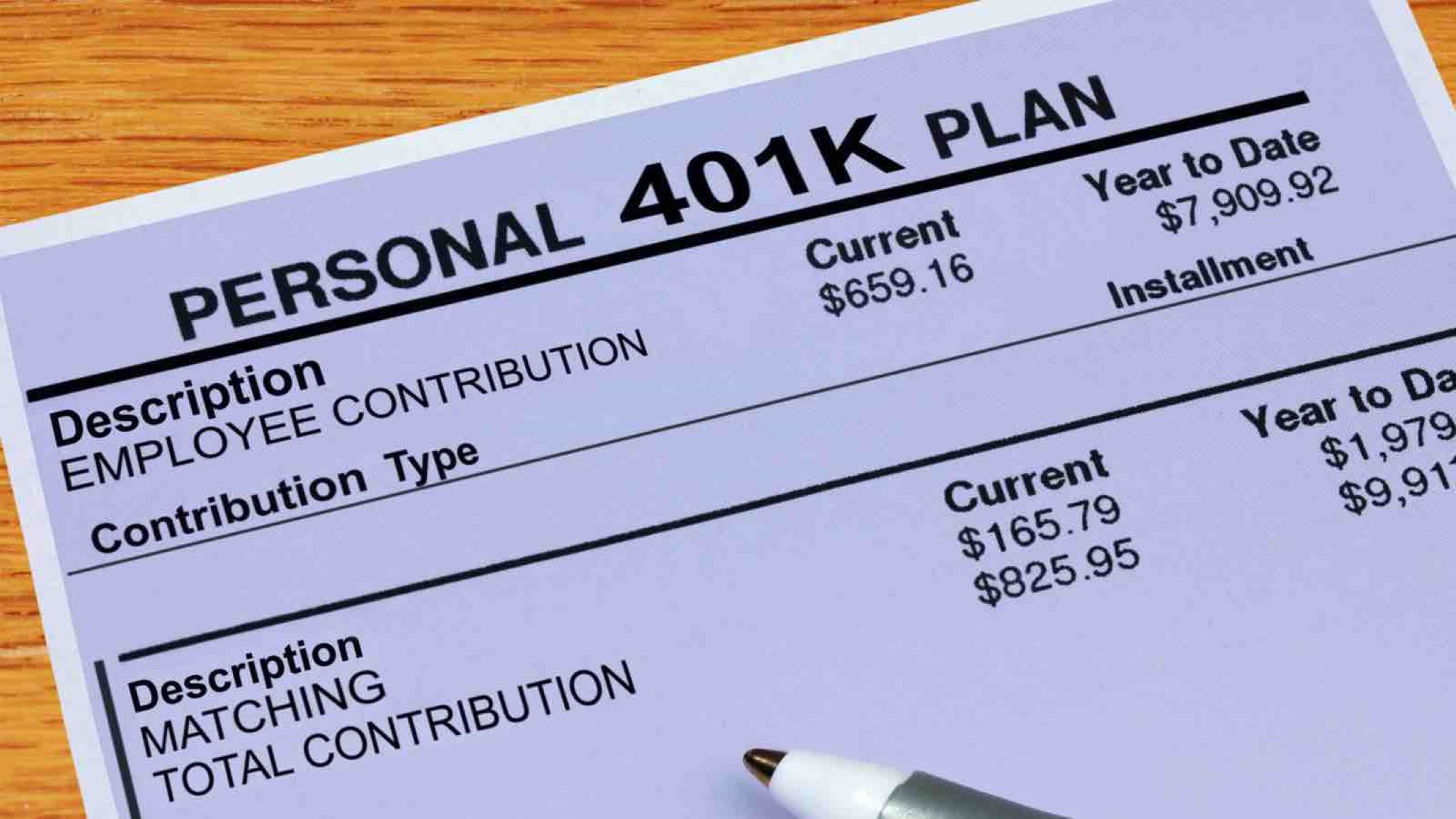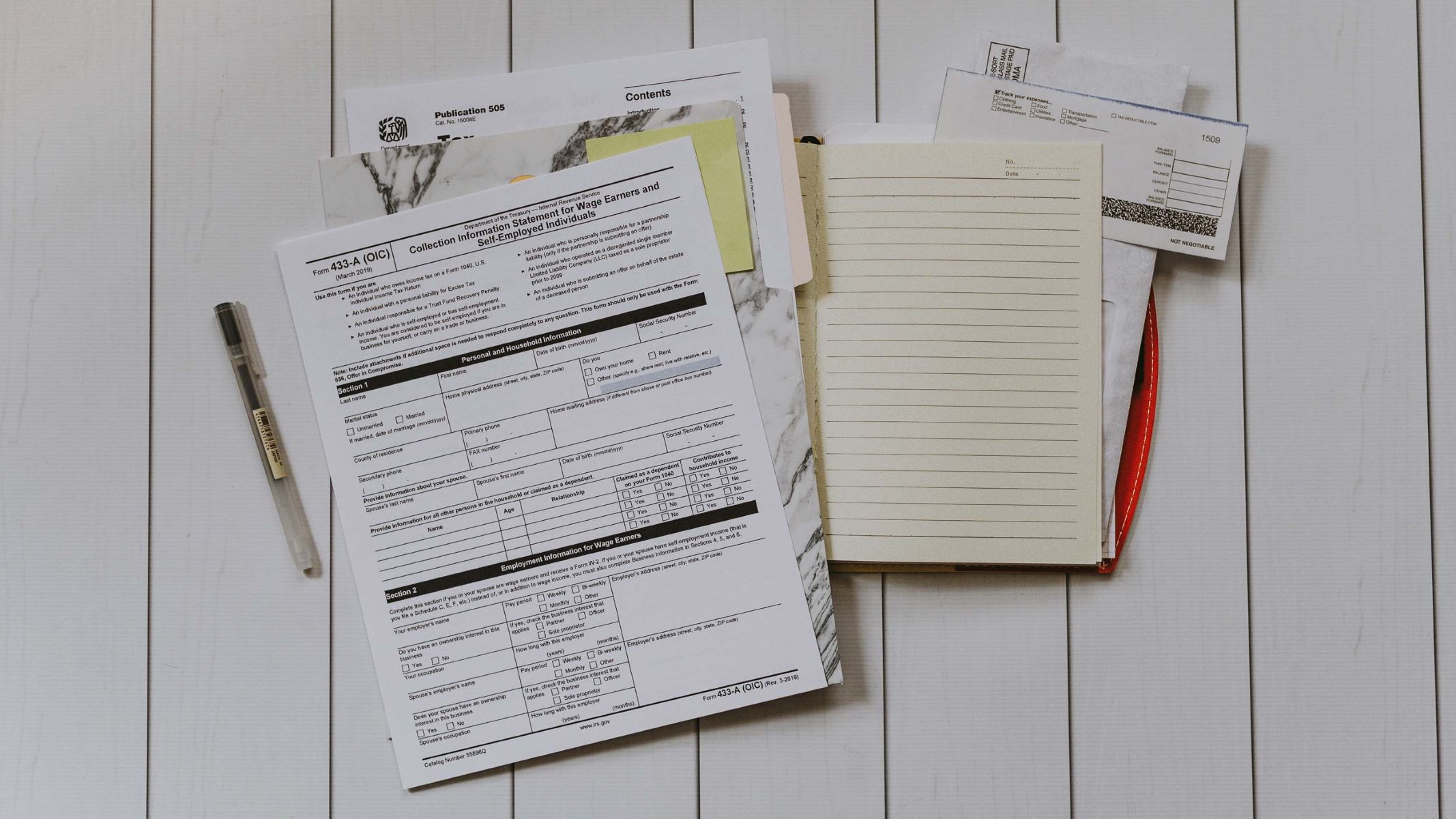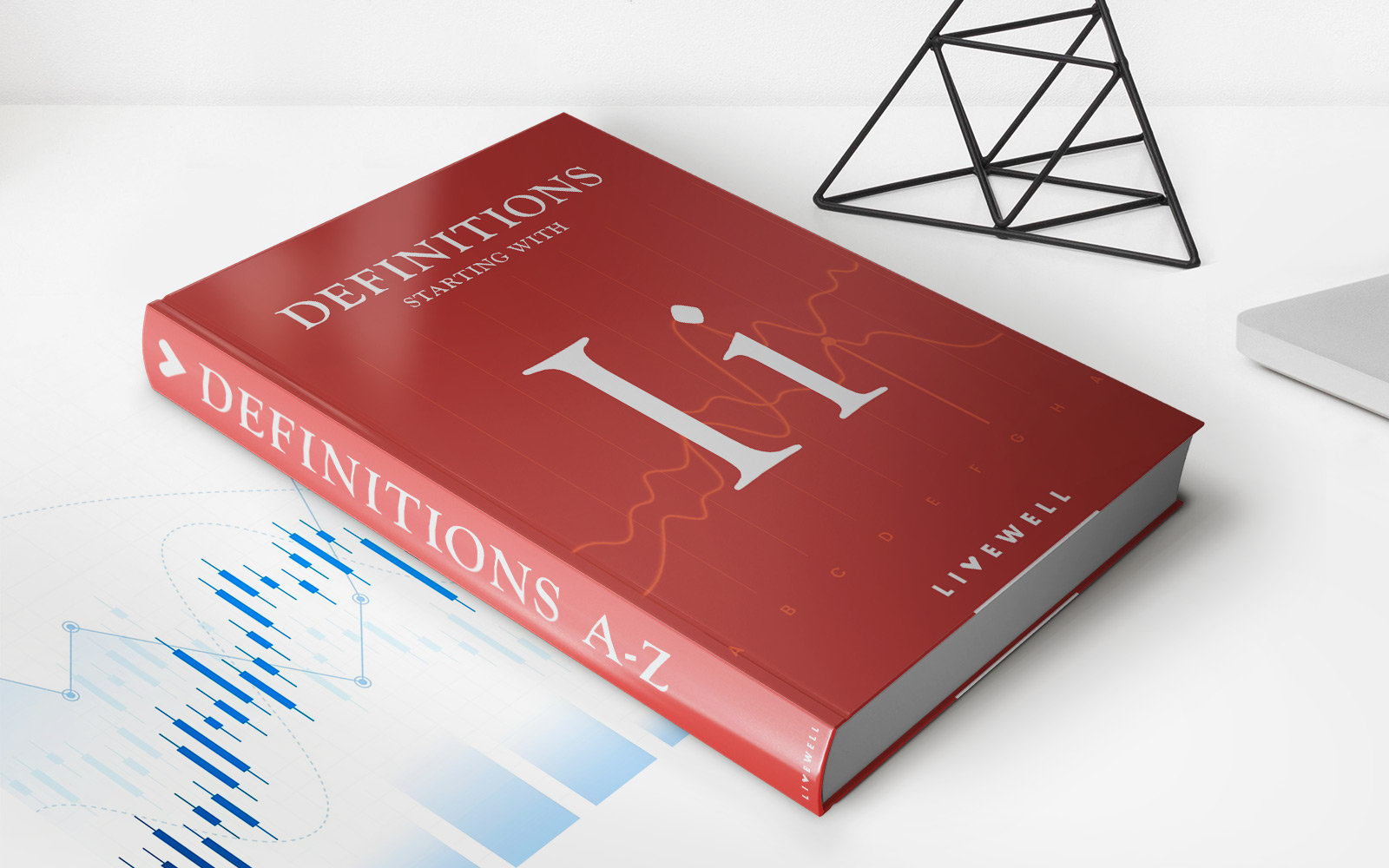

Finance
How To Deduct 401K Contributions On Taxes
Modified: December 30, 2023
Learn how to deduct your 401K contributions on taxes with our comprehensive Finance guide. Maximize your tax savings and secure your financial future.
(Many of the links in this article redirect to a specific reviewed product. Your purchase of these products through affiliate links helps to generate commission for LiveWell, at no extra cost. Learn more)
Table of Contents
- Introduction
- Understanding 401K Contributions
- Eligibility for Tax Deductions
- Types of 401K Plans
- Determining 401K Contribution Limits
- How to Deduct 401K Contributions on Taxes
- Step 1: Verify Your Eligibility
- Step 2: Confirm Your Plan Type
- Step 3: Calculate Your Maximum Deduction
- Step 4: Fill Out Form 1040 or 1040A
- Step 5: Report Your Contributions
- Step 6: Seek Professional Assistance if needed
- Common Mistakes to Avoid
- Frequently Asked Questions (FAQs)
- Conclusion
Introduction
When it comes to planning for retirement, a 401K plan can be a valuable tool for securing your financial future. Not only does it help you save for retirement, but it also offers tax advantages that can lower your tax bill. One of the key benefits of a 401K plan is the ability to deduct your contributions on your tax return. By understanding how to maximize this deduction, you can take full advantage of the tax benefits that come with investing in a 401K.
In this article, we will delve into the details of deducting 401K contributions on your taxes. We will explore the eligibility requirements, the different types of 401K plans, and the steps you need to follow to ensure you claim the maximum deduction. Whether you are a seasoned investor or just starting your retirement savings journey, this guide will provide you with the knowledge you need to optimize your tax savings.
Before we dive into the specifics, it’s important to note that tax laws and regulations can change over time. Therefore, it’s always wise to consult with a tax professional or financial advisor to ensure you are making informed decisions based on the most up-to-date information.
Now, let’s begin by understanding the basics of 401K contributions and the eligibility criteria for claiming deductions.
Understanding 401K Contributions
A 401K is a retirement savings plan offered by employers to their employees. It allows individuals to contribute a portion of their salary on a pre-tax basis, meaning the contributions are deducted from their paycheck before taxes are applied. This has the advantage of lowering the individual’s taxable income for the year, potentially reducing their overall tax liability.
Contributions to a traditional 401K plan are made on a pre-tax basis, while contributions to a Roth 401K plan are made on a post-tax basis. In a traditional 401K, the contributions and any investment gains are not subject to taxes until they are withdrawn during retirement. Conversely, in a Roth 401K, contributions are made with after-tax dollars, but qualified withdrawals, including investment gains, are tax-free.
It’s important to note that the IRS sets annual contribution limits for 401K plans to ensure they are used primarily for retirement savings. For 2021, the maximum contribution limit is $19,500 for individuals under the age of 50. Individuals aged 50 and older can make an additional catch-up contribution of $6,500, bringing their total limit to $26,000.
In addition to the contribution limits, there may be restrictions on the percentage of income that can be contributed based on the employee’s salary and participation rules set by the employer. It’s vital to review your specific plan details to determine the maximum amount you can contribute.
By making regular contributions to your 401K, you not only save for retirement but also take advantage of potential employer matching contributions. Many employers provide a matching contribution based on a percentage of your salary or a predetermined formula. This employer match is essentially free money and can significantly boost your retirement savings over time.
Understanding how your 401K contributions work and the potential tax benefits can help you make informed decisions about your retirement savings strategy. In the next section, we will discuss the eligibility criteria for deducting your 401K contributions on your tax return.
Eligibility for Tax Deductions
Not everyone is eligible to deduct their 401K contributions on their tax return. The eligibility criteria for claiming a deduction on your contributions are as follows:
- Employment status: You must be employed by a company that offers a 401K plan. Self-employed individuals can set up a Solo 401K or consider other retirement plans that may have similar tax advantages.
- Plan participation: You must actively participate in the 401K plan and make contributions from your salary. Merely having access to a 401K plan through your employer does not make you eligible for a deduction if you do not contribute.
- Traditional 401K contribution: To deduct your contributions, you must be enrolled in a traditional 401K plan. If you contribute to a Roth 401K, your contributions are made on an after-tax basis and do not qualify for a tax deduction.
- Income limits: There are no income limits for claiming a deduction on traditional 401K contributions. However, if you are a high-income earner and also contribute to a Roth IRA, there may be income limits that affect your eligibility to deduct your traditional 401K contributions. Consult with a tax professional to understand how these limits may impact your tax situation.
It’s worth noting that if you or your spouse is covered by a retirement plan at work, such as a 401K, your eligibility for deducting traditional IRA contributions may be limited or phased out based on your income. This is known as the “IRA deduction phase-out” rule. Again, seeking guidance from a tax professional can help you navigate these rules and optimize your tax savings.
Keep in mind that the purpose of a 401K is to save for retirement, so early withdrawals from your account before the age of 59 ½ may result in penalties and additional taxes. However, there are certain circumstances, such as financial hardship or a qualified disability, that may allow for penalty-free early withdrawals. It’s important to understand the rules and consult with a financial advisor or tax professional before making any decisions regarding early withdrawals.
Now that we’ve covered the eligibility criteria for tax deductions, let’s explore the different types of 401K plans that you may encounter.
Types of 401K Plans
When it comes to 401K plans, there are primarily two types that you may come across: traditional 401K and Roth 401K. Understanding the differences between these plans can help you make informed decisions about your retirement savings strategy and optimize your tax benefits.
1. Traditional 401K: The traditional 401K is the most common type of employer-sponsored retirement plan. With a traditional 401K, your contributions are made on a pre-tax basis, meaning they are deducted from your paycheck before taxes are applied. This reduces your taxable income for the year, potentially lowering your overall tax liability. The contributions and any investment gains within the account grow tax-deferred until you make withdrawals during retirement. At that point, the withdrawals are subject to ordinary income taxes.
2. Roth 401K: The Roth 401K is a relatively newer option and offers different tax advantages compared to the traditional 401K. With a Roth 401K, your contributions are made on a post-tax basis, meaning they are not tax-deductible. However, qualified withdrawals, including investment gains, are tax-free in retirement. This can provide tax-free income during your retirement years.
It’s important to note that not all employers offer a Roth 401K option, so you may need to check with your employer to see if it is available to you. If both traditional and Roth 401K options are available, you may have the flexibility to divide your contributions between the two, allowing for a mix of pre-tax and after-tax retirement savings.
When choosing between a traditional 401K and a Roth 401K, there are several factors to consider, including your current tax bracket, anticipated tax bracket in retirement, and personal financial goals. Speaking with a financial advisor can help you evaluate these factors and determine which option aligns best with your individual circumstances.
Additionally, some employers may offer a matching contribution only for traditional 401K contributions, further incentivizing employees to contribute to this type of plan. It’s important to take advantage of any employer match as it is essentially free money that can significantly boost your retirement savings.
Now that we’ve covered the different types of 401K plans, let’s move on to understanding how the contribution limits for these plans are determined.
Determining 401K Contribution Limits
The IRS sets annual contribution limits for 401K plans to ensure that individuals do not exceed the intended tax advantages of these retirement savings vehicles. The specific contribution limits are based on several factors and can vary from year to year.
For the year 2021, the maximum contribution limit for individuals under the age of 50 is $19,500. This means that you can contribute up to $19,500 of your salary to your 401K plan on a pre-tax basis. If you are aged 50 or older, you are eligible for catch-up contributions. The catch-up contribution limit for 2021 is an additional $6,500, bringing the total contribution limit for individuals aged 50 and older to $26,000.
It’s important to note that these contribution limits apply to both traditional and Roth 401K plans combined. Therefore, if you contribute to both types of plans, you will need to ensure that your total contributions do not exceed the annual limits.
In addition to the overall contribution limits, there may be additional restrictions on the percentage of income that you can contribute based on your salary and participation rules set by your employer. Some employers may impose a percentage limit or a matching contribution formula, which may affect the maximum amount you can contribute. It’s crucial to review the details of your specific 401K plan to determine any additional restrictions that may apply.
It’s worth noting that contributing the maximum allowed amount to your 401K plan is not always feasible for everyone. It’s important to prioritize your financial goals and consider other expenses and savings needs. Even if you cannot contribute the maximum, contributing consistently over time can still have a significant impact on your retirement savings.
Understanding the contribution limits of your 401K plan and regularly reviewing them can help you optimize your retirement savings strategy. In the next section, we will discuss the step-by-step process of deducting your 401K contributions on your tax return.
How to Deduct 401K Contributions on Taxes
Claiming a tax deduction for your 401K contributions is a straightforward process. By following a few simple steps, you can ensure that you maximize your tax savings. Here’s a step-by-step guide:
Step 1: Verify Your Eligibility: Before proceeding with the deduction process, make sure you meet the eligibility criteria, as mentioned earlier. This includes being employed by a company that offers a 401K plan and actively participating in the plan through salary contributions.
Step 2: Confirm Your Plan Type: Determine whether your contributions are made to a traditional 401K plan. Only contributions to traditional 401K plans are eligible for tax deductions. If you have both traditional and Roth 401K contributions, separate the amounts as only traditional contributions are deductible.
Step 3: Calculate Your Maximum Deduction: Review your plan details, including any percentage or employer match restrictions, to determine the maximum amount you can deduct. Consider the annual contribution limits set by the IRS, as well as any other plan-specific limitations.
Step 4: Fill Out Form 1040 or 1040A: When filing your tax return, use the appropriate form (e.g., Form 1040 or 1040A) and ensure you accurately report your 401K contributions. These forms have sections dedicated to reporting retirement plan contributions.
Step 5: Report Your Contributions: On the designated section of your tax form, report your 401K contributions for the tax year. This may include both employee contributions and any employer matching contributions.
Step 6: Seek Professional Assistance if Needed: If you are uncertain about any aspect of claiming your 401K deduction or have complex tax situations, consider seeking assistance from a tax professional or accountant. They can provide personalized guidance and ensure that you accurately claim your deduction while maximizing your tax benefits.
Following these steps will help you properly deduct your 401K contributions on your tax return. Remember to keep documentation of your contributions, such as pay stubs or year-end statements, as proof of your eligibility for the deduction. It’s always recommended to consult with a tax professional or financial advisor to ensure you are adhering to the most up-to-date tax laws and regulations.
In the next section, we will discuss some common mistakes to avoid when deducting your 401K contributions on your taxes.
Step 1: Verify Your Eligibility
Before proceeding with the process of deducting your 401K contributions on your taxes, it’s essential to ensure that you meet the eligibility criteria. Here are the key points to consider:
Employment Status: You must be employed by a company that offers a 401K plan. Self-employed individuals, freelancers, and independent contractors typically have different retirement plan options, such as a Solo 401K or SEP-IRA.
Active Participation: To be eligible for the deduction, you must actively participate in the 401K plan by making contributions from your salary. Simply having access to a 401K plan through your employer does not automatically make you eligible for a tax deduction if you do not contribute.
Plan Type: Verify that your contributions are being made to a traditional 401K plan. Only contributions to traditional plans are eligible for tax deductions. Contributions made to a Roth 401K plan are made on an after-tax basis and are not deductible.
Income Limits: There are no income limits specifically for deducting traditional 401K contributions. However, if you are a high-income earner and contribute to a Roth IRA as well, there may be income limits that affect your eligibility to deduct your traditional 401K contributions. Consulting with a tax professional can help you understand how these limits may impact your tax situation.
By verifying your eligibility, you can ensure that you meet the necessary requirements to claim a deduction on your 401K contributions. It’s crucial to review your specific plan details, including any participation rules or restrictions set by your employer, to understand the maximum amount you can contribute and deduct.
Keep in mind that a 401K is designed for long-term retirement savings, so early withdrawals before the age of 59 ½ may result in penalties and taxes. However, there are certain exceptions, such as financial hardship or a qualified disability, that may allow for penalty-free early withdrawals. It’s important to understand the rules and consult a financial advisor or tax professional before making any decisions regarding early withdrawals.
Once you have verified your eligibility, you can move on to the next step, which is confirming your plan type. This will ensure that you correctly report your contributions when filing your taxes. Let’s delve into the details of plan types in the next section.
Step 2: Confirm Your Plan Type
After verifying your eligibility to deduct your 401K contributions on your taxes, the next step is to confirm your plan type. This step is essential to ensure that you accurately report your contributions when filing your tax return. Here’s what you need to know:
Traditional 401K: The traditional 401K is the most common type of employer-sponsored retirement plan. Contributions to a traditional 401K are made on a pre-tax basis, meaning they are deducted from your paycheck before taxes are applied. These contributions reduce your taxable income for the year, potentially lowering your overall tax liability. The earnings on your contributions are tax-deferred until you make withdrawals during retirement, at which point they are subject to ordinary income taxes.
Roth 401K: The Roth 401K is another type of employer-sponsored retirement plan, but with a different tax treatment. Contributions to a Roth 401K are made on a post-tax basis, meaning they are not tax-deductible. However, qualified withdrawals from a Roth 401K, including investment gains, are tax-free in retirement. This can provide tax-free income during your retirement years.
It’s important to note that not all employers offer a Roth 401K option, so you may need to check with your employer to determine if it is available to you. If both traditional and Roth 401K options are available, you may have the flexibility to divide your contributions between the two, allowing for a mix of pre-tax and after-tax retirement savings.
When it comes to reporting your contributions on your tax return, it’s crucial to separate your contributions based on the plan type. If you have both traditional and Roth 401K contributions, you should ensure that you accurately specify the amounts for each plan type when completing your tax forms.
Confirming your plan type is an essential step to ensure accurate reporting of your contributions. By identifying whether your contributions are being made to a traditional or Roth 401K, you can proceed to the next step in the process, which is calculating your maximum deduction.
Let’s move on to the next section, where we will discuss the steps to calculate your maximum deduction based on your 401K contributions.
Step 3: Calculate Your Maximum Deduction
Calculating your maximum deduction is an important step in ensuring that you optimize the tax benefits of your 401K contributions. By determining the maximum amount you can deduct, you can take full advantage of the tax savings. Here’s how you can calculate your maximum deduction:
Review Your Plan Details: Start by reviewing the details of your 401K plan, including any percentage or employer match restrictions. Some employers may impose a limit on the percentage of your income that you can contribute to your 401K plan. Additionally, they may offer a matching contribution based on your contributions up to a certain percentage of your salary. Consider these factors when calculating your maximum deduction.
Consider Annual Contribution Limits: Determine whether you have reached the annual contribution limit set by the IRS. For the tax year 2021, the maximum contribution limit for individuals under the age of 50 is $19,500. If you are aged 50 and older, you are eligible for catch-up contributions, with an additional limit of $6,500. It’s important to stay within these limits to ensure your contributions are tax-advantaged.
Account for Employer Contributions: If your employer offers a matching contribution, take this into account when calculating your maximum deduction. Employer contributions are essentially free money that boosts your retirement savings. Be aware of any limitations or restrictions on the employer match and include it in your calculation.
Consider Both Employee and Employer Contributions: When calculating your maximum deduction, include both your own employee contributions and any matching contributions made by your employer. Remember to separate the amounts for traditional and Roth 401K contributions if you have both types.
By evaluating your plan details, understanding the annual contribution limits, and accounting for employer contributions, you can calculate your maximum deduction accurately. It’s important to strive to contribute enough to maximize any employer match, as this is essentially free money that helps accelerate your retirement savings growth.
Once you have calculated your maximum deduction, you can move on to the next step, which is filling out the appropriate tax forms. This will allow you to report your contributions and claim your deduction effectively. In the next section, we will discuss the specific tax forms you need to complete.
Step 4: Fill Out Form 1040 or 1040A
When it comes to reporting your 401K contributions and claiming your deduction on your taxes, you will need to fill out the appropriate tax form. For most taxpayers, this will be either Form 1040 or Form 1040A. Here’s what you need to know:
Form 1040: Form 1040 is the standard individual income tax return form. It is used by taxpayers who have more complex tax situations, such as itemized deductions or self-employment income. If you fall into this category, you will need to complete Form 1040 to report your 401K contributions and claim your deduction.
Form 1040A: Form 1040A is a simplified version of Form 1040 and is often used by taxpayers with less complex tax situations. If you have a straightforward tax return and do not have significant itemized deductions or self-employment income, you may be eligible to use Form 1040A.
When filling out either Form 1040 or Form 1040A, you will need to locate the section that pertains to retirement plan contributions. These forms have dedicated sections where you can report your 401K contributions and claim your deduction.
If you are using Form 1040, look for the appropriate sections related to retirement plan contributions and follow the instructions for reporting your 401K contributions. On Form 1040A, you can report your retirement plan contributions on Line 28, labeled “IRA deduction.”
Be sure to accurately enter the amounts for both your employee contributions and any matching contributions made by your employer. Separate your contributions based on the plan type (traditional or Roth) if applicable.
It’s important to note that tax forms may change from year to year, so it’s crucial to use the most up-to-date version of the form that corresponds to the tax year you are filing for. Additionally, always double-check the instructions provided with the form to ensure you are accurately reporting your contributions and claiming your deduction.
If you are uncertain about how to complete the tax forms or have a more complex tax situation, consider seeking assistance from a tax professional or accountant. They can provide guidance and ensure that you accurately report your 401K contributions and claim your deduction.
Now that you’ve filled out the necessary tax forms, you can proceed to the next step, which is reporting your contributions on your tax return. We will discuss this in detail in the following section.
Step 5: Report Your Contributions
After filling out the appropriate tax form (Form 1040 or 1040A), you need to report your 401K contributions on your tax return. This ensures that your contributions are properly accounted for, and you can claim the maximum deduction. Here’s how to report your contributions:
Traditional 401K Contributions: On the designated section of your tax form, look for the area that asks for retirement plan contributions. Enter the total amount of your traditional 401K contributions for the tax year. This includes both your own employee contributions and any matching contributions made by your employer. Be sure to indicate that these are traditional 401K contributions to differentiate them from Roth contributions.
Roth 401K Contributions: If you made contributions to a Roth 401K, they cannot be deducted on your tax return since they are made with after-tax dollars and are not tax-deductible. Roth contributions are tax-free when withdrawn in retirement, so they are not reported on your tax return for deduction purposes.
Calculate and report your contributions accurately to avoid any errors on your tax return. If you have any doubts or questions, consult the instructions provided with the tax form or seek the help of a tax professional.
It’s worth noting that reporting your 401K contributions is just one part of the process. You will need to complete the remainder of your tax return, including reporting all other income, deductions, and credits. By accurately filling out the entire tax form, you can ensure that your deductions are properly accounted for and your tax liability is correctly calculated.
Once you have reported your contributions on your tax return, it’s a good practice to review your final return before submitting it to the IRS. Double-check all the information, calculations, and deductions to ensure accuracy and completeness. If necessary, seek professional assistance or use tax software to help you prepare your return and identify any potential errors or omissions.
By diligently reporting your contributions and taking advantage of the available deductions, you can maximize the tax benefits of your 401K plan. In the next section, we will discuss some common mistakes to avoid when deducting your 401K contributions on your taxes.
Step 6: Seek Professional Assistance if needed
While understanding how to deduct your 401K contributions on your taxes is relatively straightforward, tax laws and regulations can be complex. If you have a more complex tax situation or if you are uncertain about any aspect of deducting your 401K contributions, it is wise to seek professional assistance. Here’s why:
Expertise and Knowledge: Tax professionals and accountants have the expertise and knowledge to navigate the nuances of tax laws and regulations. They stay up-to-date with the latest changes and can provide accurate guidance based on your specific circumstances. Their specialized knowledge can help you maximize your deductions and minimize any potential errors or mistakes.
Individualized Advice: A tax professional can provide personalized advice tailored to your financial situation. They can assess your overall tax picture, including other deductions and credits, to ensure you are optimizing your tax savings. They can also help you understand how 401K deductions fit into your overall tax strategy and retirement planning.
Audit Protection: If you are concerned about being audited or facing IRS scrutiny, having professional assistance can provide an added layer of protection. A tax professional can help ensure that your tax return is accurate and in compliance with tax laws, reducing the likelihood of issues with the IRS.
Peace of Mind: Hiring a tax professional can provide peace of mind, knowing that your tax return is being prepared by a qualified expert. It can offer reassurance that your deductions are being claimed correctly and that you are leveraging all available tax benefits.
In addition to seeking assistance from a tax professional, you may also consider using tax software. Many tax software programs are user-friendly, providing step-by-step guidance and ensuring accurate calculations. However, keep in mind that software may not be suitable for more complex tax situations or personalized advice.
Remember, the ultimate responsibility for the accuracy of your tax return rests with you. Whether you choose to seek professional assistance, use tax software, or prepare your own return, ensure that you review your tax return before submitting it to the IRS. Double-check all deductions, calculations, and personal information to avoid any mistakes that could trigger additional scrutiny or penalties.
By seeking professional assistance when needed, you can have confidence in the accuracy of your tax return and maximize your deductions effectively.
Now that we have discussed all the necessary steps to deduct your 401K contributions on your taxes, let’s move on to the next section where we will highlight some common mistakes to avoid during the process.
Common Mistakes to Avoid
When deducting your 401K contributions on your taxes, it’s important to be aware of common mistakes that can lead to errors or missed opportunities. By avoiding these mistakes, you can ensure that you make the most of your tax deductions and accurately report your contributions. Here are some common pitfalls to avoid:
Not Reviewing Plan Details: Failing to review your specific 401K plan details can lead to misunderstandings about contribution limits, matching contributions, or other plan-specific restrictions. Take the time to thoroughly understand your plan to avoid any misconceptions that may result in reporting errors.
Mixing Up Traditional and Roth Contributions: Be cautious when reporting contributions if you have both traditional and Roth 401K accounts. Ensure that you correctly distinguish between the two when reporting on your tax return to avoid overreporting or underreporting your deductions.
Missing Reporting Deadlines: Failing to report your 401K contributions on time can result in missed deductions. Be aware of tax filing deadlines to ensure that you submit your tax return accurately and within the designated timeframe.
Forgetting to Include Employer Contributions: Make sure to include any matching contributions made by your employer when reporting your 401K contributions. Forgetting to include these contributions can lead to missed deductions.
Not Seeking Professional Assistance when Needed: If you have a more complex tax situation or are uncertain about any aspect of deducting your 401K contributions, don’t hesitate to seek professional assistance. A tax professional or accountant can provide guidance and expertise, helping you maximize your deductions while minimizing errors.
Incorrect Calculations: Mathematical errors or incorrect calculations when determining your deductible contributions can lead to inaccuracies on your tax return. Double-check all calculations to ensure accuracy and consider using tax software or seeking professional assistance if you are unsure.
Not Keeping Documentation: It’s crucial to retain all relevant documentation, such as pay stubs or year-end statements, as proof of your 401K contributions and eligibility for deductions. Keeping proper documentation is essential in case of an IRS review or audit.
By avoiding these common mistakes, you can ensure that your tax return is accurate, maximizing your deductions while staying in compliance with tax laws and regulations. Taking the time to review your plan details, accurately report your contributions, and seek professional assistance when needed can significantly improve the accuracy of your tax return.
Now that we’ve highlighted the common mistakes to avoid, let’s address some frequently asked questions related to deducting 401K contributions on taxes.
Frequently Asked Questions (FAQs)
Here are some frequently asked questions regarding the deduction of 401K contributions on taxes:
1. Can I deduct my 401K contributions on my taxes?
Yes, you may be eligible to deduct your 401K contributions on your taxes if you meet the eligibility criteria. Contributions to a traditional 401K plan are generally tax-deductible, which can lower your taxable income and potentially reduce your tax liability.
2. Are Roth 401K contributions tax-deductible?
No, Roth 401K contributions are made with after-tax dollars and are not tax-deductible. However, qualified withdrawals from a Roth 401K, including investment gains, are tax-free in retirement.
3. What are the contribution limits for 401K plans?
The IRS sets annual contribution limits for 401K plans. For the tax year 2021, individuals under the age of 50 can contribute up to $19,500, while individuals aged 50 and older can make catch-up contributions of up to $6,500, resulting in a total limit of $26,000.
4. Can I contribute to both a traditional and a Roth 401K?
Yes, if your employer offers both options, you may contribute to both a traditional and a Roth 401K. However, keep in mind that the total contribution limit applies to both types of contributions combined.
5. Do I report my 401K contributions on my tax return even if I cannot deduct them?
Yes, it’s important to report your 401K contributions on your tax return, even if you cannot deduct them. Accurately reporting your contributions helps maintain a record of your retirement savings and ensures compliance with tax laws.
6. What happens if I exceed the annual contribution limits?
If you contribute more than the IRS-determined limits for a given tax year, you may face penalties. It’s essential to monitor your contributions and ensure they stay within the allowed limits to avoid any issues.
7. How long do I need to keep documentation of my 401K contributions?
You should keep documentation, such as pay stubs or year-end statements, as proof of your 401K contributions for at least three years after filing your tax return. In case of an IRS audit or review, this documentation will be useful to substantiate your deductions and eligibility.
8. Can I make changes to my 401K contributions after filing my tax return?
Yes, you may be able to make changes to your 401K contributions mid-year or after filing your tax return. However, any changes made after the tax year-end will apply to future contributions and will not affect the deductions claimed on your previous tax return.
Remember, these answers are general in nature, and individual circumstances may vary. It’s always recommended to consult with a tax professional or financial advisor for personalized information related to your specific tax situation and retirement planning needs.
Now, let’s wrap up our discussion on deducting 401K contributions on taxes in the concluding section.
Conclusion
Understanding how to deduct your 401K contributions on your taxes is crucial for maximizing your retirement savings and optimizing your tax benefits. By following the steps outlined in this guide, you can ensure that you navigate the process effectively and claim the maximum deduction available to you.
We started by discussing the basics of 401K contributions and eligibility requirements. We then explored the different types of 401K plans, including traditional and Roth options, and highlighted the importance of understanding their tax implications.
We delved into determining your 401K contribution limits, taking into account the annual limits set by the IRS and any additional restrictions specific to your employer’s plan. Calculating your maximum deduction based on these limits is essential and can help you take full advantage of the available tax advantages.
We walked through the steps of verifying your eligibility, confirming your plan type, calculating your maximum deduction, and reporting your contributions on the appropriate tax forms. Each of these steps is crucial to accurately document your contributions and deductions.
We emphasized the importance of seeking professional assistance if needed. Tax professionals and accountants can provide personalized advice, navigate complex tax laws, and ensure the accuracy of your tax return.
Lastly, we highlighted common mistakes to avoid, such as mixing up plan types, missing reporting deadlines, and incorrect calculations. By being aware of these pitfalls, you can minimize errors and optimize your tax deductions.
Remember, tax laws and regulations may change over time. It’s essential to stay informed and consult with a tax professional or financial advisor to ensure you are making decisions based on the most current information.
Deducting your 401K contributions on your taxes is just one aspect of your overall retirement planning strategy. By utilizing the tax advantages of your 401K plan and continuing to save for the future, you can work towards achieving your long-term financial goals and enjoying a comfortable retirement.
So, take the knowledge you have gained from this guide, review your 401K plan, and start maximizing your tax deductions. Your financial future awaits!














